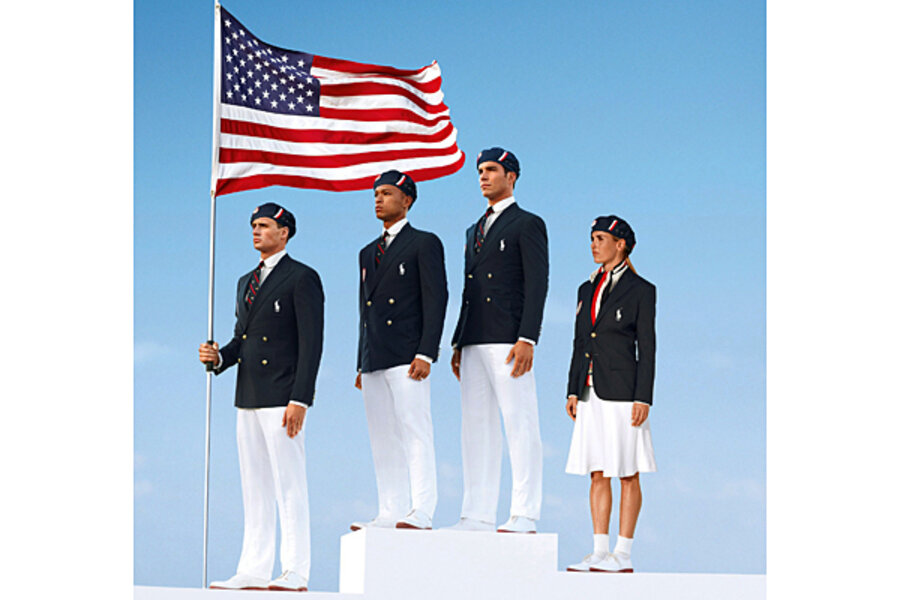What's behind the 'outrage' over Chinese-made US Olympics uniforms?
Loading...
With congressional leaders threatening to gather up all of the Ralph Lauren-designed, Chinese-made US Olympic uniforms and give them the Joan of Arc treatment, I think it’s fair to say that we have officially entered the silly season.
Here’s a list of headlines in some of our finer newspapers and TV news channels.
Outrage, fury, shame... and US Olympic uniforms. It's a wonder we can all bear to face the day.
It is perhaps unfair to point out the gap between the outrage exhibited to US Olympic team uniforms on one hand, and the lack of outrage over, say, the continuing civil war in Syria, the European economic crisis, or the growing drought in the African Sahel region.
Let us be clear: Ralph Lauren’s choice of hats for the US Olympics team is atrocious. But the debate over “made in China” is really a debate over US jobs and the collapse of American manufacturing.
In America, where the overall jobless rate remains around 8 percent, and where youth unemployment rates may go as high as 70 percent, this is a serious issue.
Not so long ago, ABC News asked people in New York’s Grand Central Station terminal how many of their clothing items were made in the US. Actually, they asked those passengers to take off clothes that were not made in the US. The result, ABC News memorably said, was “eye-popping.”
Some 98 percent of the clothing purchased in the United States is imported from abroad. Just two percent of clothing bought in this country is manufactured on U.S. soil.
Morgan Housel, a writer at the Motley Fool economic news website, says that focusing on clothes gives us a skewed sense of how much foreign stuff we actually buy. In an October 2011 blog, he points out “Just 2.7 percent of personal consumption expenditures go to Chinese-made goods and services. 88.5 percent of US consumer spending is on American-made goods and services.”
A common rebuttal I got was, "How can it only be 2.7 percent when almost everything in Wal-Mart (NYSE: WMT) is made in China?" Because Wal-Mart's $260 billion in U.S. revenue isn't exactly reflective of America's $14.5 trillion economy. Wal-Mart might sell a broad range of knickknacks, many of which are made in China, but the vast majority of what Americans spend their money on is not knickknacks.
The Bureau of Labor Statistics closely tracks how an average American spends their money in an annual report called the Consumer Expenditure Survey. In 2010, the average American spent 34 percent of their income on housing, 13 percent on food, 11 percent on insurance and pensions, 7 percent on health care, and 2 percent on education. Those categories alone make up nearly 70 percent of total spending, and are comprised almost entirely of American-made goods and services (only 7 percent of food is imported, according to the USDA).
I’m going to go out on a limb here: I think Americans are concerned about jobs in the US, and get frustrated when it seems jobs are being sent overseas. Still, if given the choice between watching their favorite sport on TV this summer and “burn baby burn,” they’re probably going to choose the former.
Polls conducted by Gallup in November and December 2011 bear this out. Asked whether China’s economy is a good thing or a bad thing for America, 45 percent of respondents said it was a good thing, 48 percent said it was a bad thing.
I suppose this means that the 93 percent have spoken.







